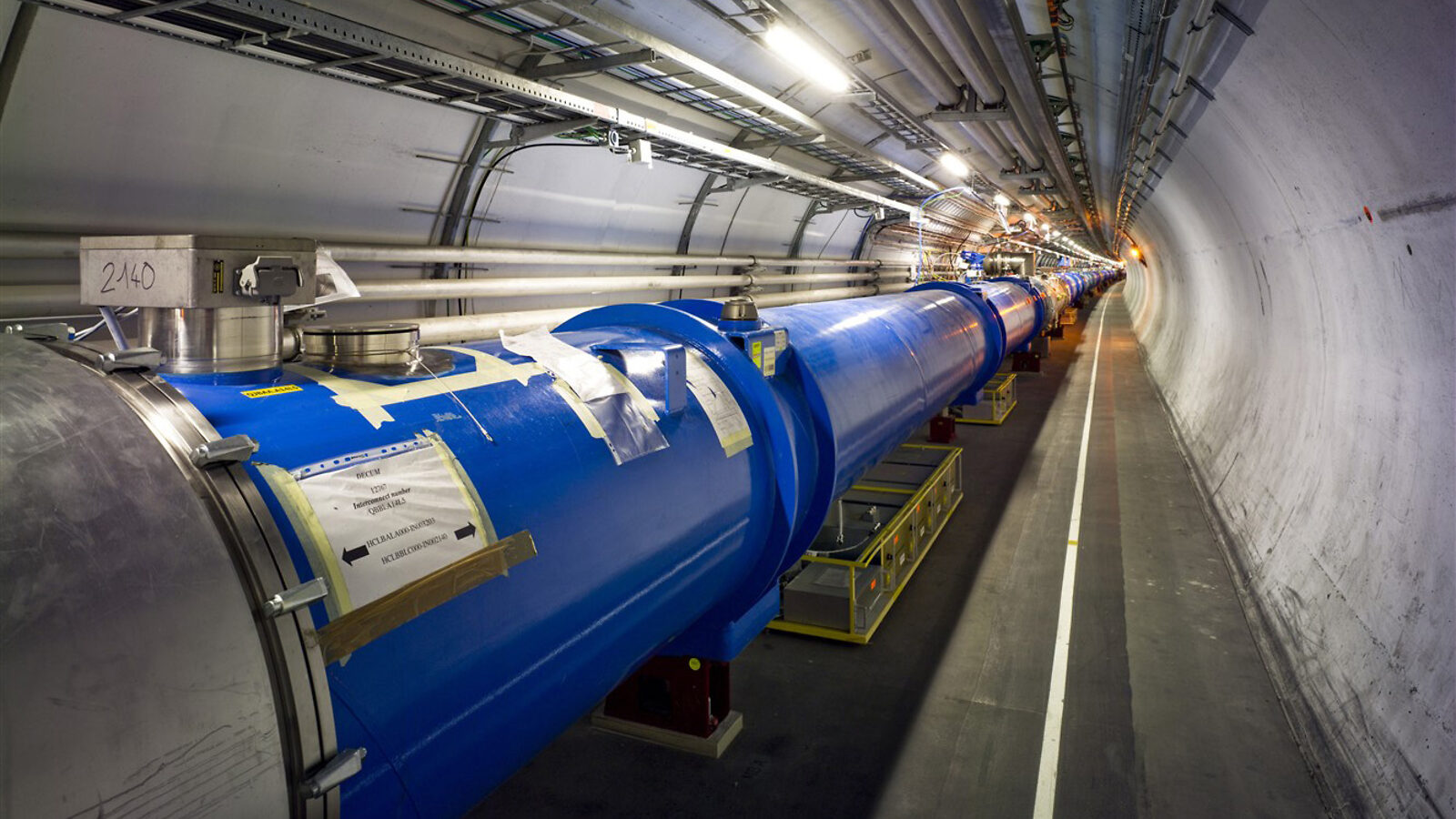After a new particle such as the Higgs boson is discovered, scientists want to measure all of its properties as accurately as possible. Not only does this help determine how it fits into our greater understanding of matter, but it can also provide hints of what we don’t yet know.
“To some people, the discovery of the Higgs completed everything,” says Colin Jessop, a professor of physics at the University of Notre Dame. “But to particle physicists, it is the beginning of everything.”
Historically, precision measurements of known particles have yielded priceless information. In the 1960s and ’70s, for example, scientists from SLAC National Accelerator Laboratory and the Massachusetts Institute of Technology proved the existence of quarks, fundamental particles that make up protons and neutrons, by making precise measurements of protons. More recently, scientists at Fermi National Accelerator Laboratory and CERN carefully measured the mass of the heaviest of the quarks, the top quark, and the W boson, a particle that carries the force that mediates atomic decay, to help them estimate the mass of the then-undiscovered Higgs boson.
Now, scientists at the Large Hadron Collider are hoping that precision measurements of the Higgs boson will help them solve the next big mysteries, such as the origin of dark matter.
“The reason we proposed the concept of dark matter is because we cannot explain the total mass of the universe,” says Swagato Banerjee, a postdoc at the University of Wisconsin. “And the only way we know how fundamental particles acquire mass is through the Higgs mechanism. So if dark matter is fundamental, it has to interact with the Higgs to acquire mass, at least in our known framework.”
When the Higgs is produced at the LHC, it quickly decays into lighter, more stable particles. If the Higgs interacts with dark matter, then it should be able to decay into dark matter. Currently LHC scientists are studying all the possible ways the Higgs can decay into other particles to search for any unexplained decays that could be hints of something new, like dark matter.
Hunting for new processes
If scientists find that the Higgs does something unexpected, it could be a clue that we don’t yet grasp the full picture, says Maria Cepeda Hermida, a postdoc at the University of Wisconsin.
“If you only look for what you think exists, then you could miss something important,” Cepeda says. “We have to look outside of the box for what we don’t expect to see if there are any new surprises.”
Cepeda is involved in a study that searches for evidence of the Higgs boson disobeying the well-defined laws of the Standard Model of particle physics. Recent studies from the CMS and ATLAS experiments at the LHC showed that the Higgs boson decays directly to particles of matter, some of which have a special characteristic called flavor.
The family of matter particles called leptons is made up of particles of three flavors: electron, muon and tau. Because the Higgs boson has no associated flavor, the Standard Model predicts that the sum of its decay products will also have no flavor. A particle of a certain flavor and its antiparticle will cancel one another out.
Cepeda is part of an analysis group Jessop leads that is looking for evidence of the Higgs breaking this rule by decaying to two particles of different flavors, namely, a tau and a muon.
The preliminary results from this study restrict the likelihood of this process enormously—down to less than three out of every 200 decays. But it cannot rule it out entirely. In fact, scientists saw a small deviation from their predictions, which is either the result of normal statistical fluctuation or the first glimpse of a new process.
If scientists find that the Higgs can break the laws of flavor, it would help explain why fundamental particles come in a variety of masses.
“We see families of particles that are identical except in their mass,” says Roni Harnik, a theorist at Fermilab. “So what mechanism ‘decides’ that the tau is much heavier than the muon, who in turn is much heavier than the electron? In the Standard Model, it is the Higgs alone.”
Evidence for this process would also open up many other possibilities, Harnik says.
“Seeing this decay would teach us something profound: that the Higgs boson is not the exclusive source of mass in the universe, and that we have more interesting things to discover.”
A mystery in itself
The Higgs boson may be physicists’ best tool to look for new particles because the Standard Model predicts that it interacts with everything that has mass. But the Higgs itself still holds many mysteries. For instance, the mass of the Higgs is precariously perched between two stable zones predicted by the Standard Model.
“If there is just the Standard Model Higgs and nothing else, then the mass of the Higgs boson is theoretically unstable,” says Hideki Okawa, a postdoc at Brookhaven National Laboratory. “Many people think that there should be something else that stabilizes the Higgs mass.”
The Higgs is also an entirely unique particle and unlike anything else ever observed by scientists. So the question remains: Is the Higgs alone? Or are there others?
“We think there could be more Higgs bosons,” Okawa says. “This would make the theory more natural.”
The restart of the LHC in early 2015 will give scientists more data to probe the properties of the Higgs boson even further and search for new physics or phenomena just out of reach.
“Finding the Higgs opens more questions than it answers,” Banerjee says. “But it also focuses the questions we had before its discovery.”







